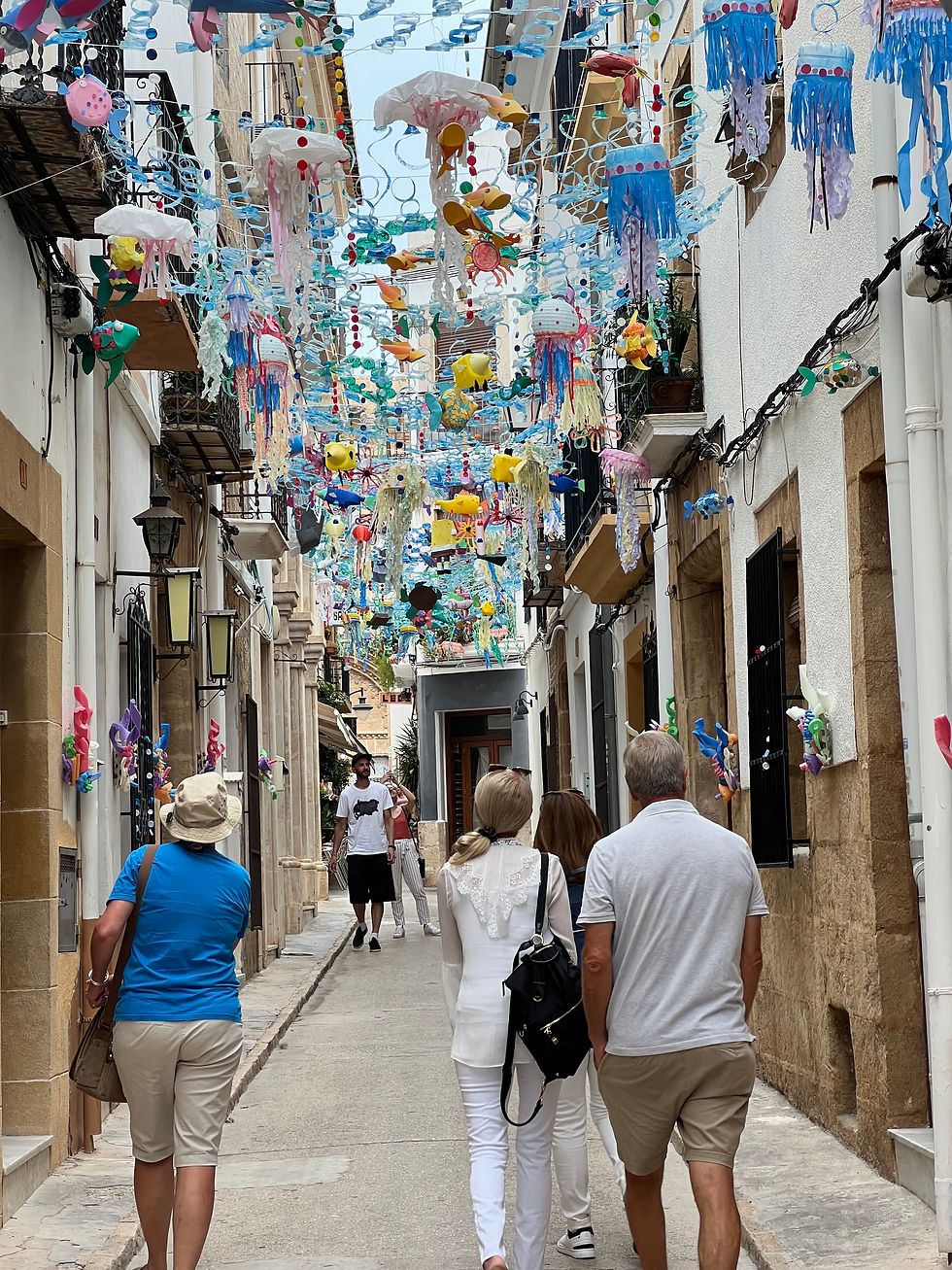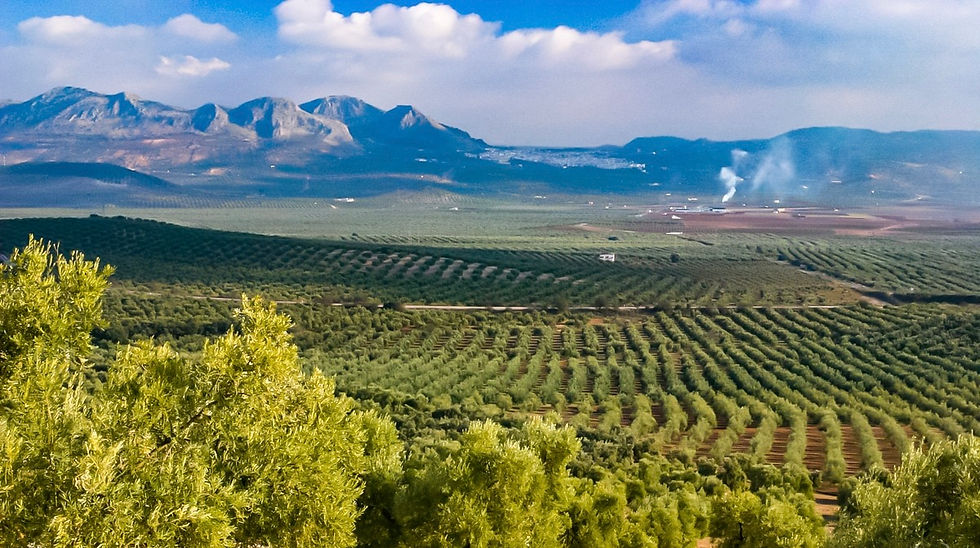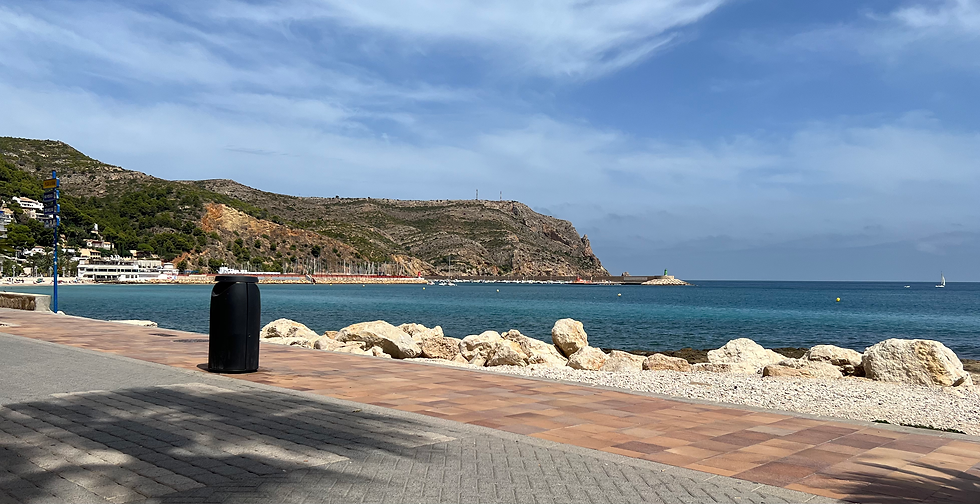
I am writing this in Xàbia, Spain visiting my friends Han and Yasmin Derksen. Han, you will have seen me mention often in my travels around Africa.
Farm Expansion
By 1979 we had been expanding our irrigation on the farm by the equivalent of our annual tobacco crop each year until in the third year I started growing tobacco followed by groundnuts, reverting back to tobacco. The surprising outcome of this was not only the use of much less fertiliser but also fewer pesticides, better quality and higher yielding tobacco. The traditional system was to have a three-year Rhodes grass ley between tobacco crops. Not only did our tobacco crop benefit from this rotation, it meant we could grow more tobacco on less land while reducing irrigation development costs. Despite this, each year we added further irrigation including the introduction of underground asbestos mainline, large enough to eventually be part of a proposed ring-main allowing us to irrigate any field on the farm when required. We used our original portable aluminium mainline to reach the more awkward fields. The designer of this grand plan was Roger Thompson of Wright Rain, a great guy who also served as an officer in the same battalion as me in the army. He, being an officer, me a lowly sergeant. Funny how it was in those days many service providers became friends.

This new rotation, therefore, offered us an opportunity to expand our annual tobacco crop. I should mention that the Farm Plan prepared by CONEX (Government Agricultural Conservation and Extension Department) advised that there were only about two hectares suitable soil for irrigation due to the farm being mostly very sandy further restricted by a shallow impregnable layer of laterite. Here we were, planning to irrigate every piece of land we could, as much as three hundred and fifty hectares of the seven hundred and forty-hectare farm. Each year we found we could scrape another inch down into the laterite with a heavy reversible plough despite the extension officers warning of doom which would leave only the vleis (marshland) uncultivated.
To cater for the expanded irrigation we decided to use the original four old tobacco barns by building a further three, converting all into a second chongolo curing system, this time heated by a hot water kettle system rather than heat exchangers. Unlike a boiler, a kettle or hot water system did not require the specifications or annual inspections that a steam boiler required by law along with being more efficient. We also set about building storage sheds with the plan to grade our own tobacco. The first shed we built was the largest at the time in that area, described as an aeroplane hangar by my father-in-law, Derek Belinsky. In later years it looked small to many as tobacco once again became the major foreign cash earner. We also started growing seed maize as I had been given a quota being an already qualified grower.
Simultaneously, we started to negotiate to buy the farm, using the good services of our accountant, John Knight, then the senior partner of Coopers and Lybrand. He was to become a long-time friend and my partner in putting the Zambian farmer scheme together. In owning the farm we would then be able to run our own cattle herd as at that time our lease agreement allowed Derek to have the use of grazing. We finally came to an agreement to pay Rh$250,000 for the farm, a huge figure in those days. Towards the end of the war, farms were changing hands at less than Rh$50,000. Of course, we believed that by having the Darwendale Dam with ten kilometres of it as boundary, the farm was unique both in agricultural potential and location. We had five years to pay it off, John Knight told Diane and I, we would never be able to do that, we did so in less than three. Once again being in the right place at the right time, willing to take the risk.
In saying this, at that time there was a mass exodus of whites, their population dropping from a peak of 300,000 in the early seventies to in the region of 100,000 by 1979, to further drop to 60,000 following independence. We were going against the flow.
That's when I adopted my outlook on life and farming.
“When everyone walks, run, when everyone runs, walk.” - Peter McSporran

My Final Contact
I suppose in war you will always remember your first and last contact no matter what in better detail than most. Of course, you never know at the time it is your last, while your first always remains the first. The stupidity of it is, as a young unbloodied soldier, you are always desperate to have your first engagement to see how you will react. Your biggest fear is always, ‘will I handle it OK?’
“In war before an action, your biggest fear is your own fear, during combat, there is no time to contemplate, afterwards you reflect, fearing what could have happened.” - Peter McSporran
My first contact, seven long years before my last one, had been a comedy of errors as previously related yet deemed a successful mission in Mozambique. As the war progresses you become sort of battle-hardened, you automatically know what to do. Most often for us territorial units, contacts happened when triggering an ambush or on follow-up. The regulars and in some rare instances us, as Fireforce would be choppered into hot scenes. In saying that, the regular white units by the end of the war were made up in many instances by over fifty percent conscripts and territorials. For us, as my friend recounted, like most armies, it is and was hurry up and wait. Then followed by a hectic few minutes only encountering your fears post the event. Your experiences mould you into a better soldier but as we now know and have witnessed, these experiences can accumulate, hidden only to emerge at a later date, even many years later. Needless to say during our war some were troubled, even if only in their dreams. None of us had heard of PTSD, and any showing the symptoms was more liable to get a kick up the backside than sympathy. Luckily, my only recurring nightmare was about losing my rifle in training. It comes in different forms, but it is always about missing an important piece of equipment, especially my rifle before going into combat. Never anything about the actual contacts.
Every contact is different, in my war many were fleeting skirmishes with a few intense close combat instances amongst them. Nearly all successful contacts were always at close range, at night even closer than during the day. Night ambushes were often sprung at a distance of five metres. If there was cover available the enemy could simply disappear on receiving heavy, accurate fire, often much to our wonder. You always wanted to be the one with the upper hand through surprise and superior firepower, which was generally achieved due to good training and the confidence of expected support required to give you the courage to hang in there. Support was either overhead air support or the arrival of Fireforce when warranted. In the army, this was generally a given although many of our fatalities were in ambushes, especially vehicles, or skirmishes before support arrived. In PATU support was not always so readily available, often mobilised by vehicles rather than choppers. Air support for PATU would often be a lone Police Reserve Airwing (PRAW), a private plane, overhead, especially in the areas deemed not so hot. The pilot would act as a spotter, some planes carried a machine gun mounted on the rear, the door removed to enable this.
It had come to our attention in late 1979 that while there had been no incidents in our area, there was a presence. One such event confirmed this when we carried out a raid at a compound on the Great Dyke close to the main Kariba Road where one of the residents, becoming aware of a presence in the early morning, called out in the dark, “Auya pano, comrade!” Welcome here comrade! A sure sign they believed we were CTs and in that there had been regular visitors.
On the back of this, it was decided to look at our own area more closely and I found myself with four others being deployed over the Hunyani River into the Zvimba TTL (Tribal Trust Land), the home zone of Mugabe and his family. This locality seemed to be strangely avoiding the violence, was it because Mugabe’s parents lived there? In the stick, a five-man, as opposed to the typical four, including myself as stick leader, Gerald Breytenbach, Hamish Black, Phil Roberts and Louw Coetzee. Although it was not a clandestine operation, rather a reconnaissance, we still left in the middle of the night through Claxton's farm and over the Hunyani River which was the boundary between the commercial farming area and the TTL.
We encountered very little in the first few hours, not even the usual lookout mujibhas. Mujibhas were the eyes and ears of the CTs, usually working under the guise of being herdsmen or in search of honey, mice or some other ruse. They were normally everywhere and if you wanted to remain clandestine you could leave neither sign nor sight of your presence. They could be as young as eight years old. This morning, nothing, which in our mind gave us a false sense of feeling there were no CTs close by.
Late morning as we approached a kraal line from a blind spot up a re-entrant, we were sighted by the villagers who ran off into the treeline beyond the village. It took us a few seconds to recognise there were a number of armed men among them hiding in the crowd, disappearing before we could safely get a shot off. Unfortunately, there were many civilian casualties during the war, they were often used as shields or porters by our enemy, some were even camp followers in the case of women. On entering the village, in an extended line we were surprisingly not met by fire and to our shock found evidence of a large contingent of CTs having openly lived there within sight of the farms across the river. Many of the huts showed evidence they were being used as makeshift barrack rooms and one large structure as a training classroom. It appeared that day had been dedicated to the making of booby traps to place under landmines, a by then common practice.
On calling in and informing HQ in Sinioa of the situation we expected a positive reaction. This was the first time I had ever worked under that operational centre. As we estimated the number of CTs to be well in excess of twenty, we expected additional support, known as a reaction stick, to be dispatched immediately. Not to be, the unknown police officer on the radio said, just start a follow-up and we will try and put something together. He was either inexperienced, stupid or both as normally in operational areas no matter what, the HQs would react immediately to the information received from the field commander. Even more worrying was the fact it seemed he was short of any manpower resources.
Obeying his orders, we started following the tracks of the larger group. As often the CTs on sightings or contact split up, bomb-shelled, to make them difficult to follow, always regrouping at pre-designated rendezvous places later. Follow-ups are always very tense, as success of a follow-up was deemed as being in contact, an engagement. Unfortunately, these contacts were almost always instigated by the enemy on finding a strong concealed position, they would wait in ambush for those following them. That day was to be no different.
As we crossed an old maize field approaching another kraal line we came under intense fire. We immediately took cover, in the sense we hit the ground as we were in the open and started returning fire. Unlike the army once again, where every stick has a MAG (machine gun), we in this case, did not have one which makes winning the firefight that much harder. As we were lying there with bullets kicking up dust around us, my rifle suddenly jammed. On diving onto the ground I somehow had gotten soil into the working parts. I was on the right flank with Gerard on my immediate left, the rest of the stick beyond him. Unfortunately, one of the CTs had spotted my problem, and unsighted to Gerald by the side of a hut, would come out to give me a snort squirt every time my weapon jammed, before ducking back as soon as he saw me clearing the weapon. I was on single shot, hand cocking the damn thing, a soldier's nightmare. As he popped out, I would fire, he would have jumped back and reappeared letting off a fusillade in automatic fire, thankfully very inaccurate mostly over my head. I was hoping I did not look as scared as he did. Gerard was an excellent shot and although he could not see my assailant his rounds hitting close to him, I am sure this made the CTs efforts even more inaccurate. The rest of the stick were all on their own targets. If caught in the open the best option is head-on attack which we did. To stand up and run for cover would have brought a swift death.
We managed to dislodge the CTs from their position with them retreating into the bush beyond. Immediately on taking the position, I called the contact in, as we always did, giving an estimate of CT numbers involved and asking for support as we were in little doubt, with their superior numbers they would likely return to hit us again. I immediately cleaned my rifle while the rest of the stick took up all round defence positions and reloaded all the magazines they had emptied. There was evidence of equipment dropped but no sign of any dead or wounded CTs at this time. During a contact, time seems to speed up and in the aftermath, it suddenly slows down. The news from HQ was bad, they would dispatch some back-up on vehicles which meant they would only arrive in about two hours. This was one of the times I really regretted being a part of the police rather than the army. On rare occasions in PATU I would find the senior officer was more a civilian-trained policeman rather than an experienced combat officer. Here we were with this dreaded scenario. Let me tell you the air was blue around that village. As the afternoon dragged on and the CTs realised we five were on our own without a MAG we assumed we would be attacked towards evening. This was proven correct as I will relate next week.

Disclaimer: Copyright Peter McSporran. The content in this blog represents my personal views and does not reflect corporate entities.
Comments